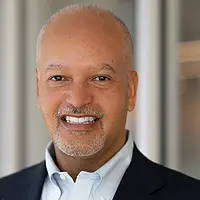This post was originally published on Devex.com in October 2017.
-----------------------------------
“I believe the purpose of foreign assistance should be ending its need to exist.”
In his welcome message, new U.S. Agency for International Development Administrator Mark Green reminded development professionals around the world that we’re all working toward the day when development programs are no longer needed. As he noted, sadly that day is far off in too many cases. The good news is that we don’t have to look further than ENVISION, USAID’s flagship neglected tropical diseases project, to find proof that this day will come. And in some places, such as Laos and Cambodia, that day is already here in their struggle against neglected tropical diseases.
USAID’s ENVISION project, implemented by RTI International, is at the heart of the global fight to control and eliminate neglected tropical diseases. ENVISION has supported the delivery of almost half of USAID’s more than 2 billion cumulative NTD treatments globally.
The governments of Laos and Cambodia, supported by USAID and the ENVISION project, marked a historic milestone last month when the World Health Organization announced that these countries have eliminated trachoma — a blinding disease that was once highly prevalent in some areas — as a public health problem. We congratulate them on this enormous accomplishment.
Eliminating trachoma in Laos and Cambodia shows that fundamentally solving — not just reducing — complex challenges through development assistance is possible. Several other countries, such as Nepal and Vietnam, are on the road to eliminating NTDs. We have also seen incredible progress in Mali and Cameroon. Across the board, due largely to USAID’s leadership, nearly 85 million people are no longer at risk for trachoma and, even more impressively, almost 200 million people are no longer at risk for lymphatic filariasis, a disfiguring disease also known as elephantiasis. We are moving ever closer to the day when there will no longer be a need for the mass drug interventions that USAID supports. Effectively, we are working ourselves out of jobs — and we couldn’t be happier about it.
How are we getting there? ENVISION supports national programs to carry out a variety of interventions and activities that have proven effective in the fight against NTDs: facilitating access to drug donations, implementing and monitoring mass drug administration, tracking treatment coverage, and adapting global guidance on NTDs to local situations. As countries move close to elimination, data expertise — particularly at the local level — becomes crucial to tackling the last mile challenges.
There are several key elements of our approach to carrying out these core activities that can help other development programs achieve and sustain their goals.
1. Become part of the national health system’s DNA
We work with governments to ensure that NTDs are incorporated into the DNA of their national health systems. For instance, we support use of tools for integrated planning and costing in order to develop smart budgets and ensure efficient resource allocation. We also help them incorporate indicators to measure the NTD burden and success of interventions into national health and management information systems, as well as into lower level government accountability systems in decentralized countries.
2. Measure, measure, and measure some more
Through ENVISION, USAID also invests heavily in accurately measuring and reporting disease prevalence, treatments, and impact. Rigorous data collection allows stakeholders to map the districts where diseases are endemic, account for progress toward elimination, and identify needs for care for those affected. We work hand-in-hand with NTD programs to use data to tailor local-level NTD interventions to solve problems, such as distributing drugs in remote or insecure areas.
3. Strengthen local capacity
Host governments are the driving forces behind our shared successes. ENVISION staff members work within countries to strengthen capacity and facilitate south-south cooperation between endemic and post-endemic countries. Throughout the project, we have prioritized sharing knowledge, facilitating training, and developing job aids and tools to support the host governments and other local stakeholders.
4. Leverage global partnerships
In addition to local partnerships, the project has leveraged partnerships at the global level. Overall, countries supported by USAID’s NTD program have received more than $17 billion in donated medicine from the pharmaceutical community. Every $1 invested in the global fight against NTDs by the U.S. government leverages $26 in private sector donations.
Like many development projects, the impact of ENVISION extends beyond its scope of eliminating NTDs and also eliminates their burden on communities. Adults who may have been unable to work become productive members of their societies; children who might otherwise care for disabled parents and grandparents can go to school; and ministries of health can focus on other health challenges, while keeping a vigilant eye on surveillance. Overall, ENVISION’s success in the fight against NTDs contributes to improved development outcomes across the board.
Mark Green’s goal for USAID — to eliminate the need for foreign assistance — is shared across the international development community. The ongoing success of USAID’s own ENVISION project demonstrates clearly that we can and are achieving this goal, one country at a time.
Paul Weisenfeld has more than two decades of experience in international development, including as a foreign service officer at USAID, where he rose to the highest rank of career minister in the Senior Foreign Service. Currently, Weisenfeld leads our international development practice, which designs and implements programs across a wide range of sectors to help low- and middle-income countries and communities address complex problems and improve the lives of their citizens.
